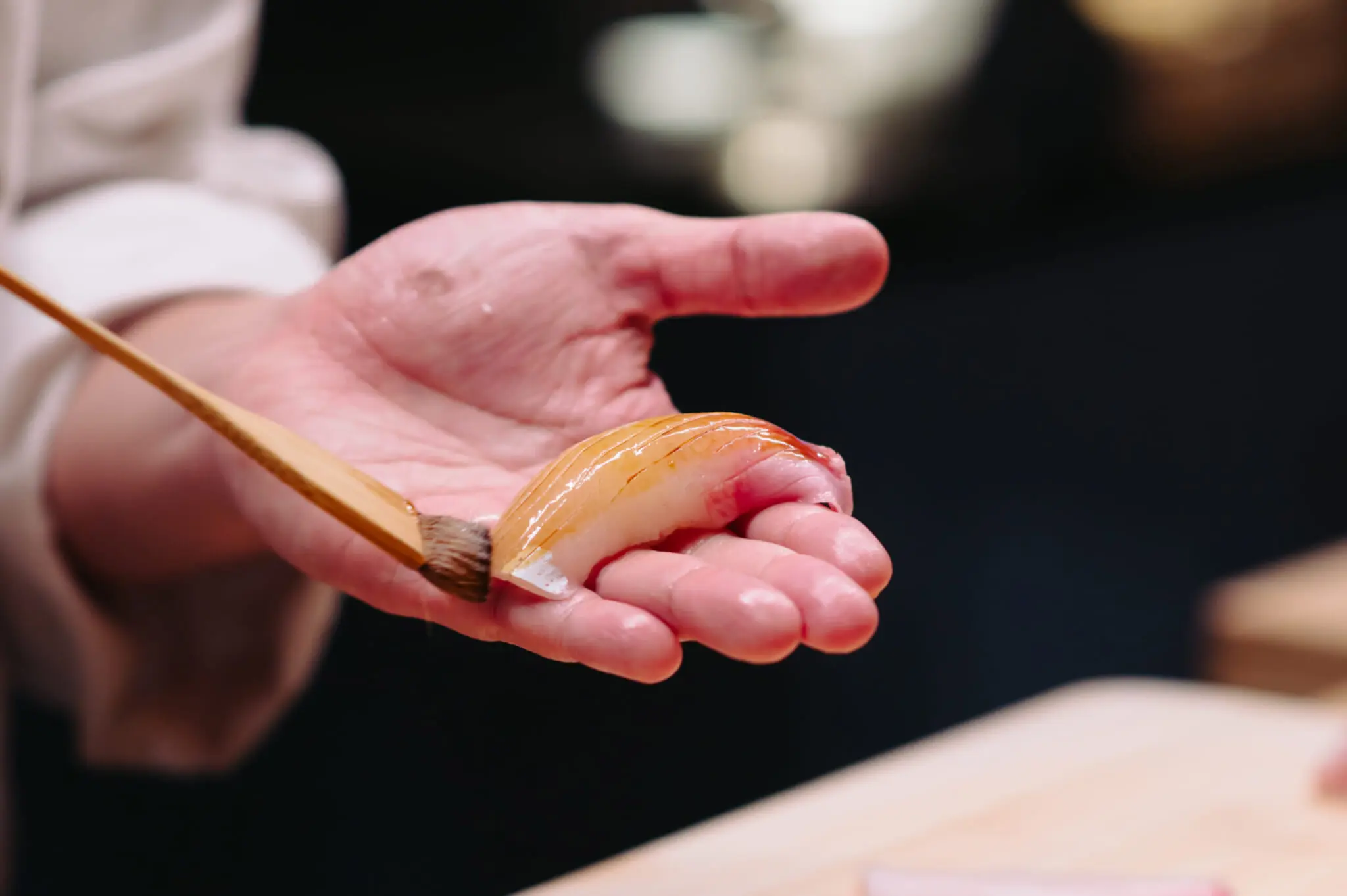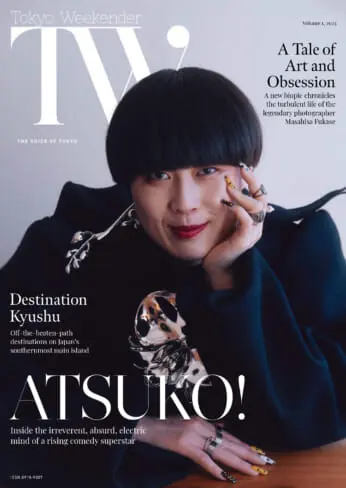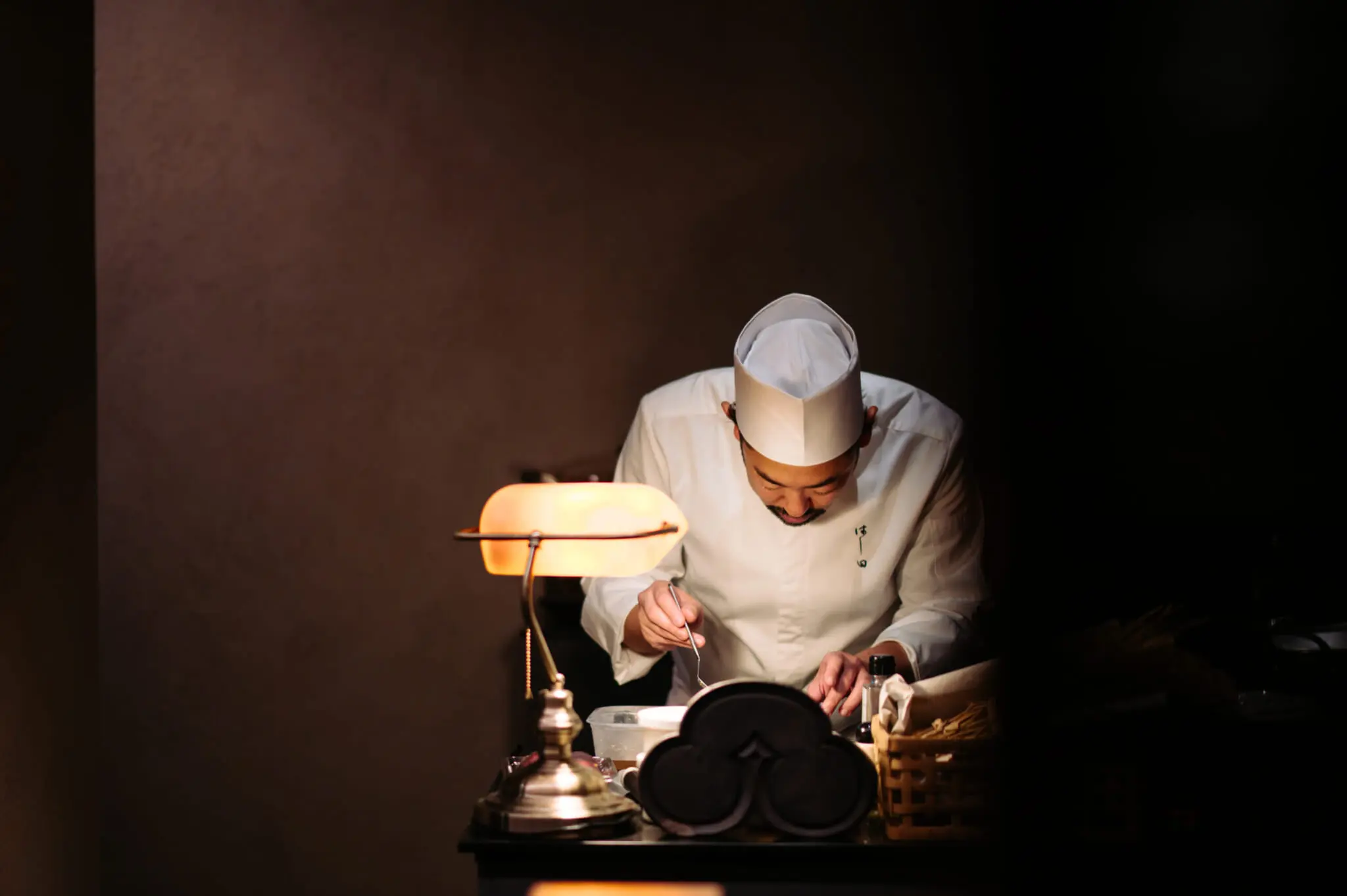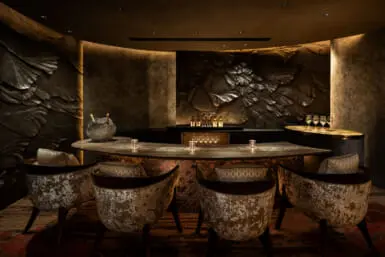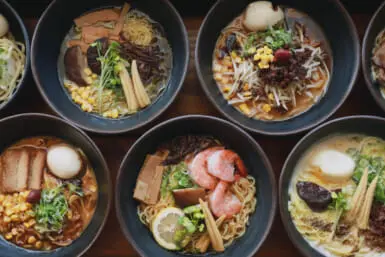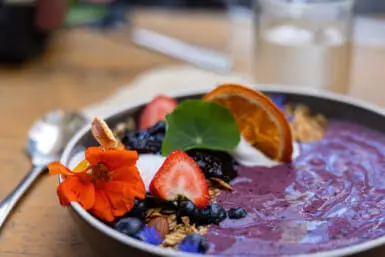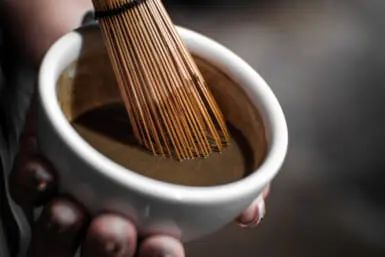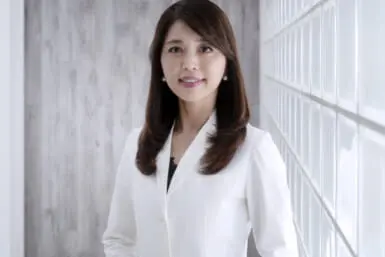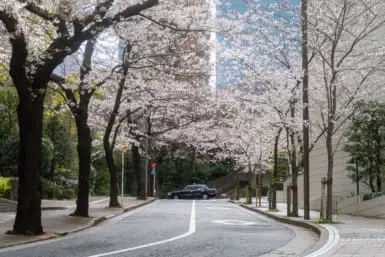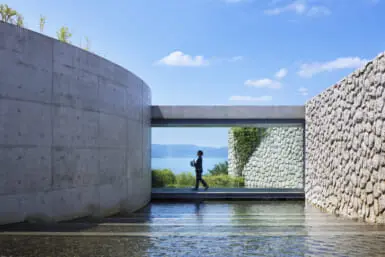This article appeared in Tokyo Weekender Vol. 4.
To read the entire issue, click here.
Dining at an upscale sushi establishment in Tokyo can feel a little intimidating for the uninitiated. The setting is often intimate, and there’s specific etiquette and flow to the meal, which can seem daunting, especially if you don’t speak the language. Fortunately, there are a few high-end sushi restaurants with a more relaxed atmosphere. A standout among these is Hashida Tokyo in Kachidoki, which was opened by the legendary late sushi master Tokio Hashida in 1969. Renovated and reopened in 2022, it’s now run by Tokio’s enigmatic son Kenjiro, who is known for his culinary creativity and devil-may-care attitude.
“The food here is free,” jokes Hashida shortly after I arrive. “Customers are just paying for the most expensive gachapon in Japan.” He then hands me a coin for a vending machine stocked full of capsule balls; inside each of these is a chopstick rest, handcrafted by Hashida himself on his days off. “I also paint a lot,” he says proudly. “My sister worries about me not sleeping, but I don’t have time for that, as I’m so passionate about everything I do.”
A Non-Conformist Itamae
Hashida is quite the character. Known affectionately as Hatch, he enjoys bantering with customers and listening to their stories. His dinner course is supposed to last around two hours, but sometimes it goes on well beyond that as he and his guests get lost in conversation. He’s a non-conformist itamae (sushi master) who does things his own way and injects his playful side into his dishes. That’s not to say he doesn’t respect traditional methods. He does. He just wants to challenge himself by pushing boundaries and embracing innovation.
A typical day in the life of Hashida begins early. He’ll usually head out to the market at around 6:30 a.m. with no concrete plan as to what he’s going to purchase. In true Marie Kondo style, he only selects ingredients that spark joy in him after coming face-to-face with the fish and getting a feel for them. He’ll also take the views of the vendors into consideration and, as a result, returns to the shop with different items each time. This means his omakase course changes regularly.
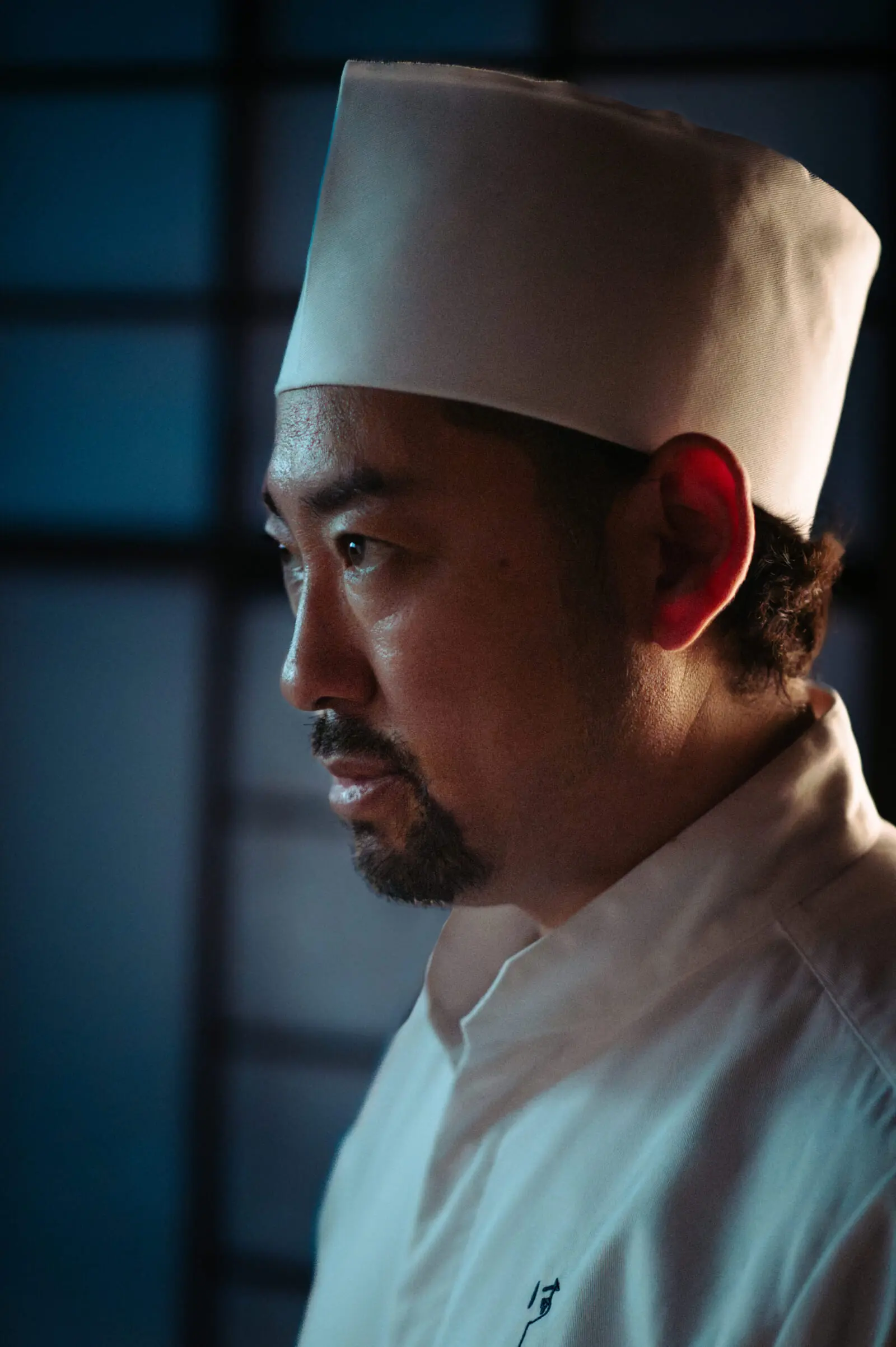
“Some customers don’t like that,” admits Hashida. “They come here for a second time and want to try what they had before, but then realize it’s not on the menu. This is just the way I do things, though, and you can’t please everyone all the time.
“For me, making sushi comes naturally. I’ve been surrounded by it my whole life and started helping my father at the restaurant when I was around 14. I learned from someone special, but that doesn’t mean I should do exactly what he did. It is important to be creative and try things that are different; otherwise, every sushi restaurant would be the same.”
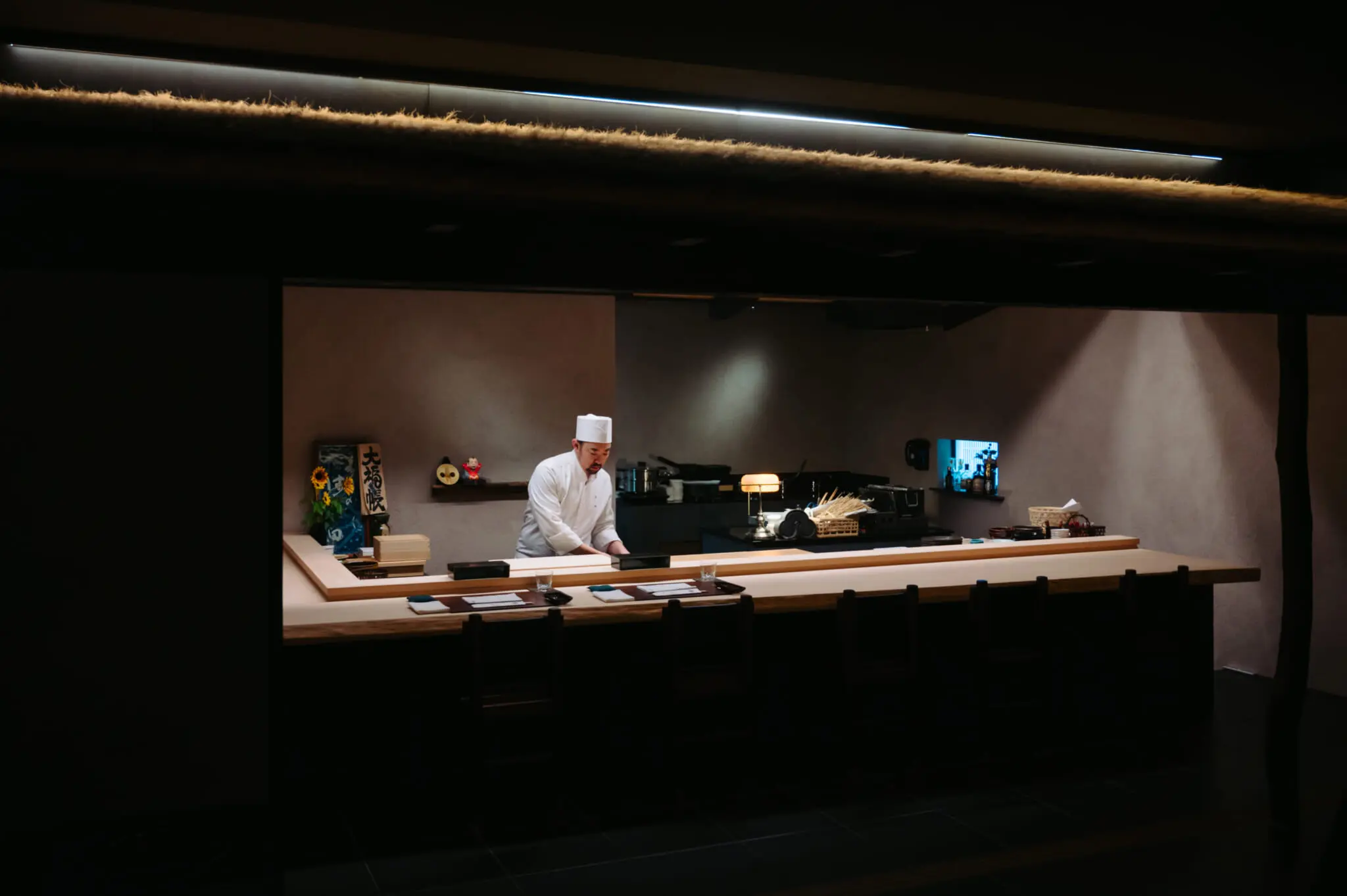
An Artist with a Knife
While chatting away, Hashida prepares our first dish. It includes salmon roe, Kyoto tofu, mozuku seaweed, corn soup and Japanese ivory shells. The presentation is stunning, and it tastes even better than it appears. Watching him work his magic behind the counter is like a show in itself. He’s an artist with a knife, yet he also seems a little disorganized. As a result, the place feels more chaotic than your typical sushi restaurant. That, though, is part of its charm — and when the food is served, everything is arranged to perfection.
Hashida’s easygoing attitude belies his expertise. A graduate of the prestigious L’Ecole Tsuji Tokyo (Tsuji Culinary Institute), he has garnered quite the reputation over the years, both in Japan and in Singapore, where he also runs a hugely successful restaurant. The two places attract a wide range of customers, including many celebrities and politicians. He says one of his most memorable guests was Will Smith; Hashida’s father apparently shocked him by pretending to shoot him with a replica gun from Men in Black.
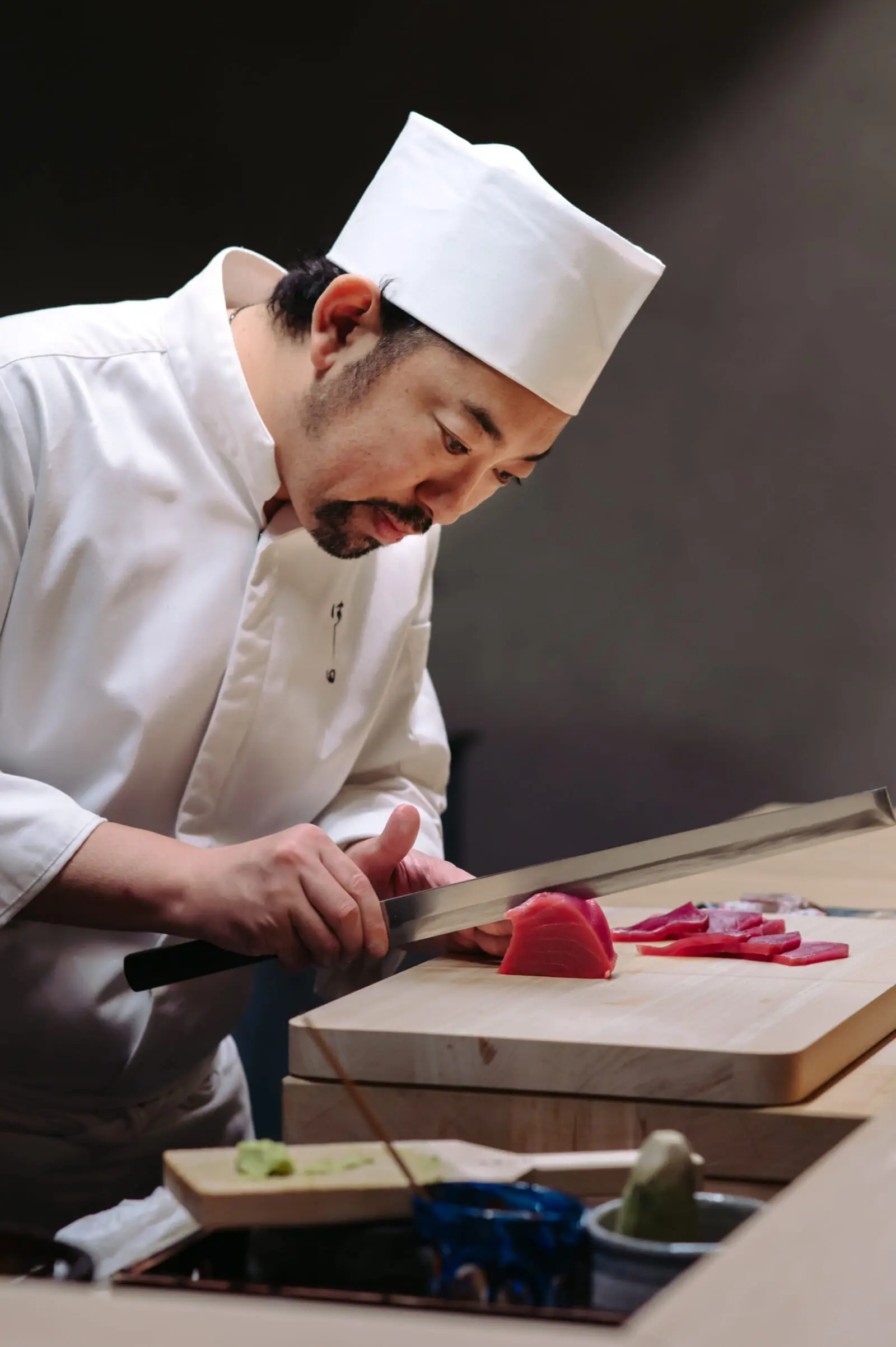
While regaling us with stories from both restaurants, Hashida continues to deliver a procession of delectable dishes. From red rockfish and monkfish liver, to somen noodles with sardines, to sesame tofu and eggplant served on a lily pad, everything that comes out of the kitchen is ingenious. Other highlights include rich-tasting Hanasaki crab, which turns bright red like a flower when cooked, and some lightly grilled bonito. And that’s just the appetizers.
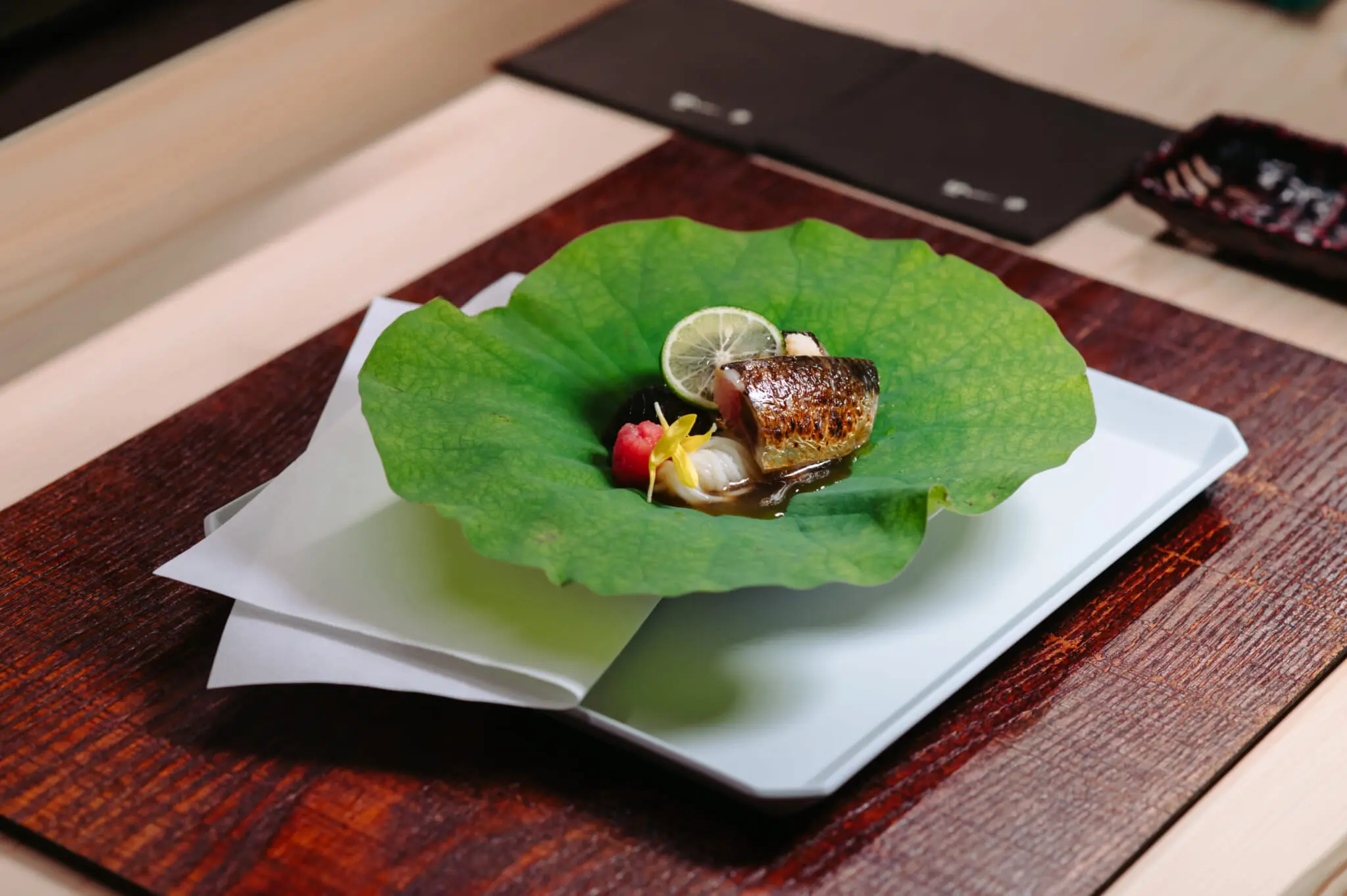
Sumptuous Sushi
The sushi portion of the meal opens with some sweet-tasting kanpachi (greater amberjack), which, Hashida explains, is extremely rich in minerals and is best eaten in the summer months. The buri (yellowtail) that comes next is soft and chewy, while the hirame (flounder) is firm with a delicate flavor. Appearance-wise, it is the takabe (yellow-striped butterfish) that stands out the most and tastes as succulent as it looks. The tachiuo (beltfish) and uni (sea urchin) sushi requires effort to fit in one’s mouth, but it’s well worth it. And finally, there’s some heavenly toro (fatty tuna) to round off the meal.
After I finish eating, Hashida gives me a tour of the place. The third floor, where he serves the omakase dinner, has a very traditional and classic feel to it, yet there are quirky pieces of art scattered around, including a limited-edition skateboard decorated by popular graffiti artist and painter Esow. The second floor is like an event space with a long counter. It’s a stylish setting for small gatherings of around 10 to 15 people. We end our tour on the first floor. It has been recreated to reflect the ambience of the old Hashida restaurant. Lunch is served here on Thursdays, Fridays and Saturdays, while dinner is served every day except for Sundays and Mondays. If you’re lucky and Hashida gets started on his anecdotes, the course meal may go on much longer than expected.
